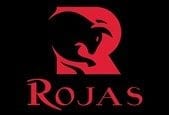About the Rojas Wines
Rojas Vineyards is proud to present its award-winning line of wines. As a new vineyard, our vintages date back to 2016 and include selections for varietals such as Pinot Noir and Sangiovese as well as Rosé versions of each.
Our wines are made from organic grapes. Like almost all wines, some sulfite is added to prevent oxidation and preserve the freshness.
Customer Notice: At this time, we are only able to accept orders from and deliver to California addresses.
Rojas 2018
Pinot Noir
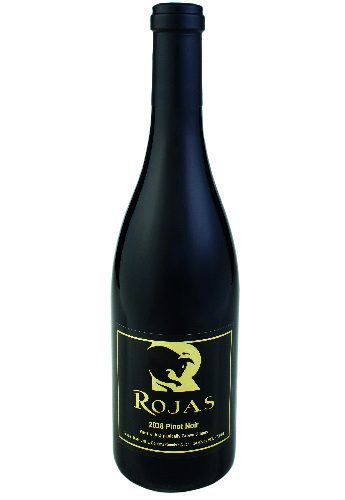
Fall in love with this lush Pinot Noir and taste the unique flavors of black cherry, rose petals, dark earth, vanilla and clove. This wine can be enjoyed with salmon, wild mushroom risotto, or simply on its own. It is utmost perfection for social gatherings of any kind, bringing everyone together with its rich flavor. Enjoy our luxurious Pinot Noir and make memories that will never be forgotten.
Rojas 2018
Sangiovese
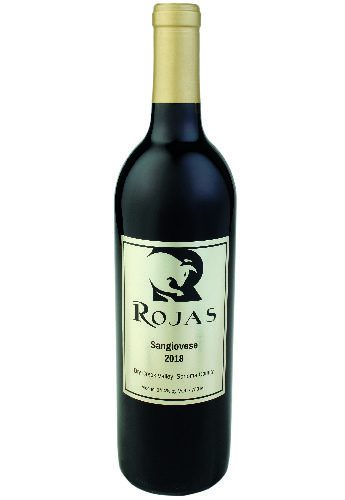
This wine is rich with cherry and strawberry flavors with hints of dried petals and dusty earth. Pair with traditional Italian fare like pasta with red sauce and eggplant Parmesan. An ideal wine for every occasion!
Rojas 2019
Pinot Noir Rosé

The 2019 Rojas Pinot Noir Rosé taste is full. In both aroma and taste you can sense strawberries, plums and jasmine. This wine is best when served with poultry and snacks including a wide variety of cheese.
Rojas 2019
Sangiovese Rosé
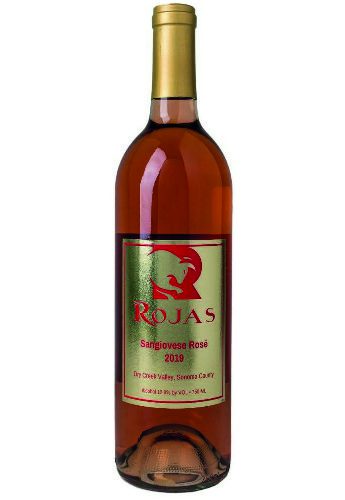
With a smooth taste of raspberry and cloves, our 2016 Pinot Noir is refreshing and light bodied. Grown from Russian River Valley organic grapes, it pairs well with Feta and Cotija cheeses and/or red meats such as beef or lamb. This wine has an exquisite aroma, ranging from earthy undertones to the delightful scent of grapes grown in Bravo Toro Vineyard.
Rojas 2017
Pinot Noir
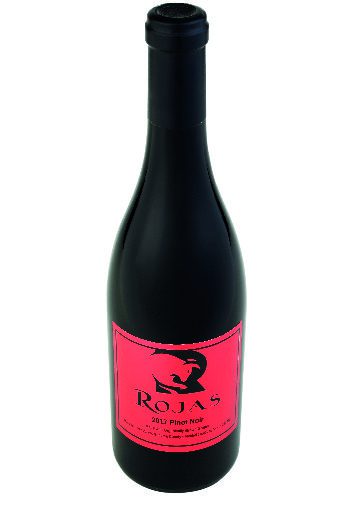
Following the success of our 2016 entry, we are proud to offer another superb wine. Our 2017 Pinot Noir is a light to medium body vintage with an aroma reminiscent of black cherries and raspberries. With a full-bodied yet soft character, it pairs seamlessly with red meats and lamb. Enjoy this fine beverage with a meal—or as an accompaniment to a casual gathering of family and friends.
The grapes for our 2017 Pinot Noir were 100% grown and harvested on Bravo Toro Vineyard in Russian River Valley, one of the best areas in the world for Pinot Noir.
Rojas 2016 Pinot
Noir Special Edition
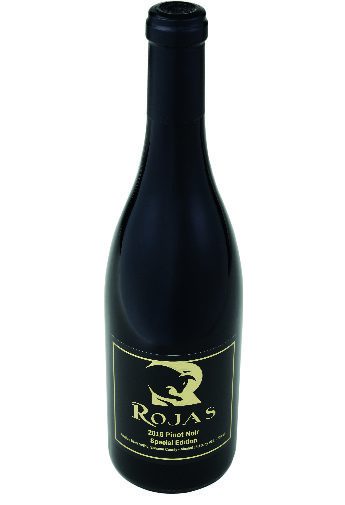
This wine excels in its vibrant red color and aroma of sweet cherries and soft hint of chocolate. Our Pinot Noir wine comes from 100% Pinot Noir grapes cultivated in Bravo Toro Vineyard in Russian River Valley. Light Pinot, balanced, offers a taste of sweet cherries with rounded tannins. Ideal in combination with spicy pasta or red meat.
Rojas 2019
Pinot Noir Antonio
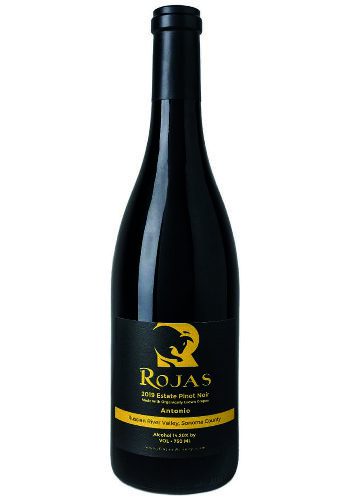
This 2019 Pinot Noir wine is named after Antonio Rojas (1943-2020), father of Jaime Rojas. It honors the first Rojas generation that tended to vineyards in California. Unfortunately, the grapes for this wine were the last ones he cared for.
Enjoy this wine in his honor, and make beautiful memories because time is so precious. This beautifully layered wine leads off with a smooth velvety texture and generous flavors of Black cherry custard. Aromas of chai spice, vanilla, bittersweet chocolate and mint tea complete this classic portrait of Russian River Pinot Noir at its finest.
Pinot Noir Reserve
Marco Antonio 2019
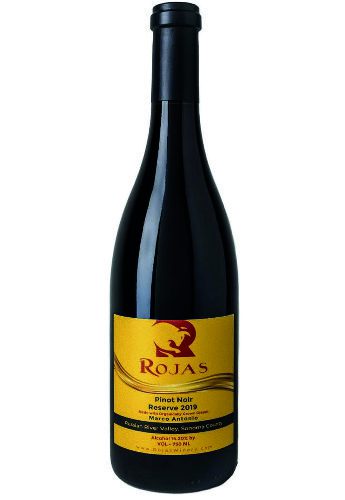
Our 2019 reserve edition is named in memory of Jaime’s brother, Marco Antonio Rojas (1969-1991). Marco Antonio worked by Jaime’s side in Wine Country during their early years. To commemorate his life and all that he contributed, we dedicate this wine to him. Made by the best grapes in our collection and selected for their quality, our 2019 Reserve Pinot Noir is medium bodied with ripe, silky tannins.
It begins with aromas of black cherry, raspberry, and strawberry, followed by buttery toasted tones, and ends with a smooth finish. Our wine pairs well with most red and white meats, especially lamb chops, tenderloin, or roasted chicken and plays well with creamy sauces as well as brie, blue, or Gorgonzola cheeses.
Rojas 2018
Cabernet Sauvignon

This inky wine has notes of black plum and dark cocoa powder with blackberry, vanilla and sage. The tannic structures high, so it pairs well with Ribeye Steak and Portobello mushroom.
Rojas 2019 Cabernet
Sauvignon John&Nin
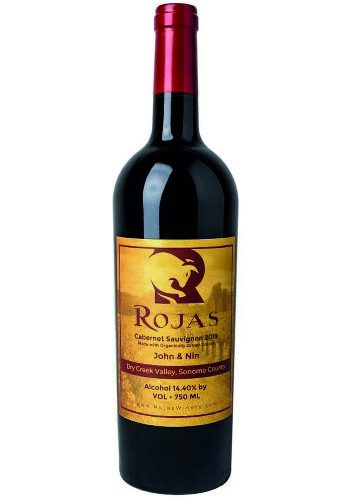
The grapes used for this wine were grown an harvested at the Five Barn Vineyard in Dry Creek Valley, Healdsburg, owned by John and Kerstin McHutchison. This wine is named after them. John & Nin bought the vineyard after years of searching for the perfect place. They named it ‘Five Barns’ as a nod to their five children and Swedish roots (barn means child in Swedish). They are passionate about good wine, good food, their family and each other!
Rojas 2018
Sagrantino
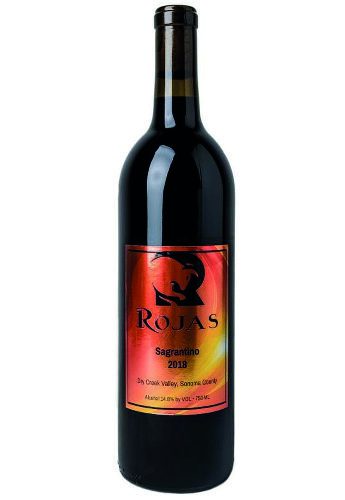
The Sagrantino 2018 is a bold and robust wine with intense flavors of dark fruits, rich tannins, and a full-bodied profile. This vintage showcases the distinctive character of the Sagrantino grape, known for its power and depth. Enjoy this wine for its boldness and complexity, making it a standout choice for those who appreciate bold red wines.
Rojas Sagrantino
Cam & Oliver 2019

The grapes used for this wine were grown and harvested at the Five Barn Vineyard in Dry Creek Valley, Healdsburg, owned by John and Kerstin McHutchison. This wine is named after their sons, Cam & Oliver. These two brothers have quite different personalities, yet they share many attributes. They are talented artists who are also whip smart, have an appreciation for astronomy, are very handsome and have a great taste in fabulous partners!
Sangiovese 2019
Kit, Ellie & Tilly
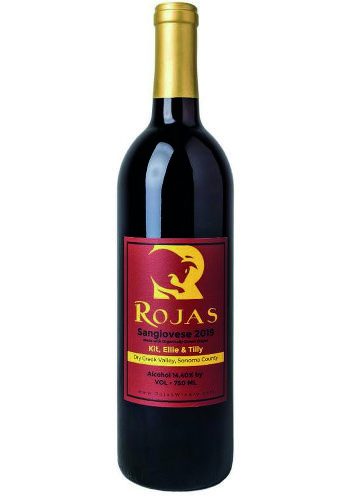
The grapes used for this wine were grown and harvested at the Five Barn Vineyard in Dry Creek Valley, Healdsburg, owned by John and Kerstin McHutchison. This wine is named after their daughters, Kit, Ellie & Tilly. These three sisters are all strong, smart and talented women. Each has chosen a unique diverse path to follow but still come together for regular support and love as needed. They share a love of music, politics, art, travel and feisty feminism.
Some Background on Wine Production
Wine Production: Some Background
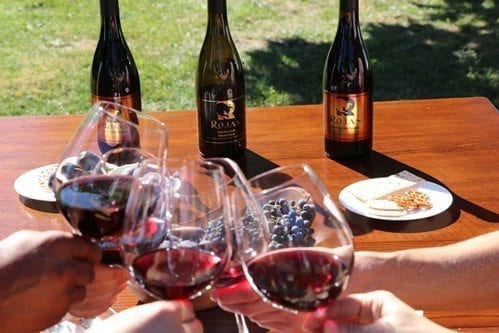
Wine grapes are the main ingredients for wine production. In our area, grapes are harvested around the end of August and beginning of September. As soon as possible after the harvest, the seeds are removed from the pulp. A byproduct not used in wine-making, the core is recycled and used for fertilizer in the vineyard.
Separating the core from the pulp must be done carefully, so that the berries in the pulp are not damaged, as that could cause bitter substances to seep into the wine. The separated pulp is called “mash.”
White Wine Production
In white wine, the mash is pressed—typically within a short period of time. The timing for core removal can range from nearly immediately to several hours. Usually mash is allowed to sit for 3 to 6 hours to ensure better extraction of aromatic substances found in the skin.
Red Wine Production
Red wine production differs from white wine production in that the mash is pressed only after it has fermented together with the skin. The coloring comes from the skin which, thanks to fermenting, is extracted into the mash.
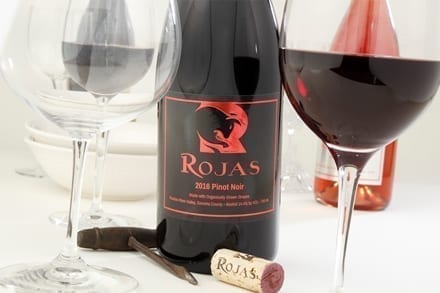 Rosé Wine Production
Rosé Wine Production
In rosé wine, mash from grapes is allowed to sit for a few hours, so that the red coloring is partially released from the skin. Then it is pressed and further processed in the same way as the white wine.
Pressing
Pressing separates the “must” (the skins, seeds, and stems of the fruit). There are multiple types of presses, such as spindle, hydraulic and pneumatic presses. After it is pressed out, the must is usually purified (separated from sediments, such as core residue and other particles). Purification can result in increased sugar content. If sugar content is increased for red wines, it happens immediately after core removal, so that added sugar ferments together with the mash.
Fermenting
As has been described already, in white wine the must ferments (after pressing; for red wines the mash (must together with skin) is pressed only after the mash has fermented. Fermenting may start either automatically (thanks to yeast that is already in grapes or vines), but we use specially selected strains of yeast.
Fermenting is a well-known process for (simplified) transformation of sugar into alcohol during creation of carbon dioxide and heat. The current trend (especially for white wines) is cool fermenting must so that the temperature of the must does not exceed 64.5 F to 68 F. At this temperature, wine retains many more natural aromatic substances than if the must were allowed to ferment automatically at higher temperatures.
Wine Training
Wine training is understood as the process of wine manipulation from the end of fermenting until preparation for bottling (or sale as barrel wine). In particular, this involves bottling (separation of wine from settled yeast), addition of sulfur dioxide to prevent oxidation, clarification (removal of proteins and other unwanted substances) and may also involve other operations. Filtration is an important part of wine training.
Training has a major effect on the character of wine and requires a careful and professionally talented winemaker. The character of wine is also influenced by whether it is stored in rust-free containers or in wooden barrels. New wooden barrels also give wine other taste and aromatic features.
